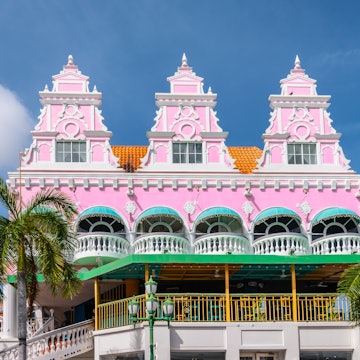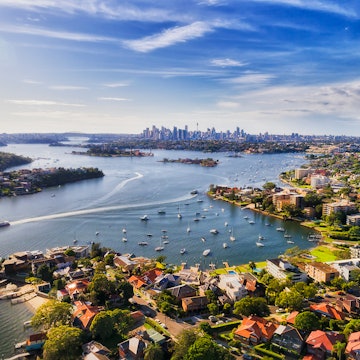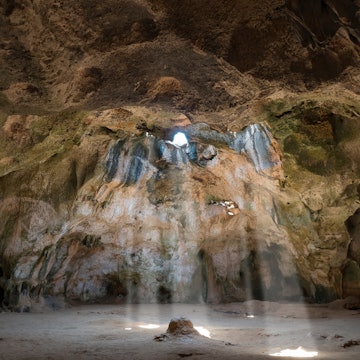
The 14 best things to do in London's Notting Hill

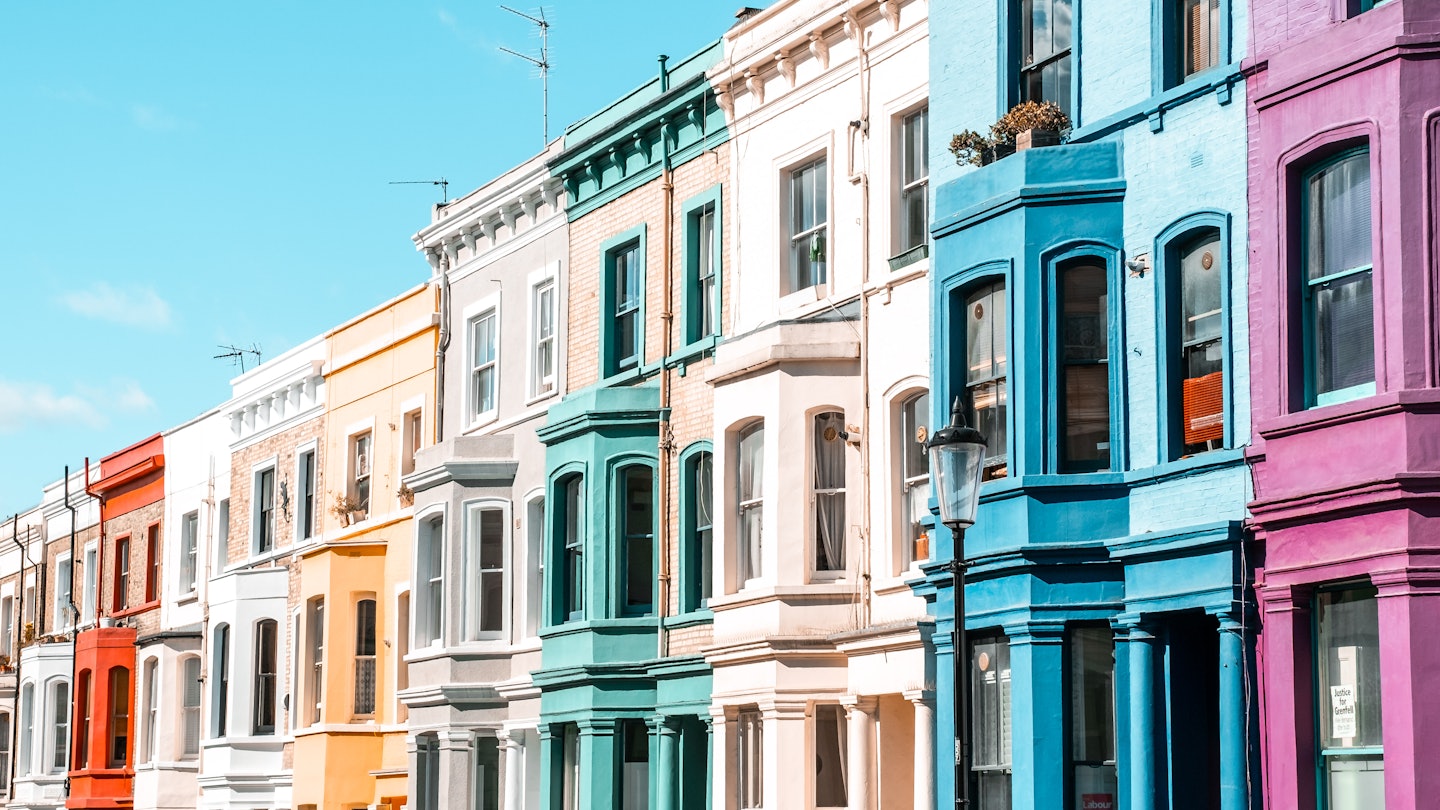
Some of the colorful terrace houses found in the London neighborhood of Notting Hill. huesofdelahaye/Shutterstock
Thanks to a certain smash-hit rom-com from 1999, Notting Hill is one of London’s best-recognized neighborhoods – and a must-visit on any London itinerary. It’s where you’ll find Portobello Road Market, elegant rows of colorful terrace houses and an annual Carnival that brings hundreds of thousands of visitors to London each year.
Notting Hill and its surrounds are also home to unique off-the-main-tourist-radar museums, quintessential London pubs, and the picturesque Grand Union Canal and Little Venice. To the east you’ll find Paddington, a major transport hub; to the south lie Holland Park and Kensington.
In Notting Hill, some of London’s most expensive properties rub shoulders with social-housing estates, such as the architecturally significant Trellick Tower. Just juxtapositions make it one of the most socially, economically and culturally diverse parts of London to explore.
So jump on the Tube, train or bus, and discover the best things to do in Notting Hill and its satellite neighborhoods.
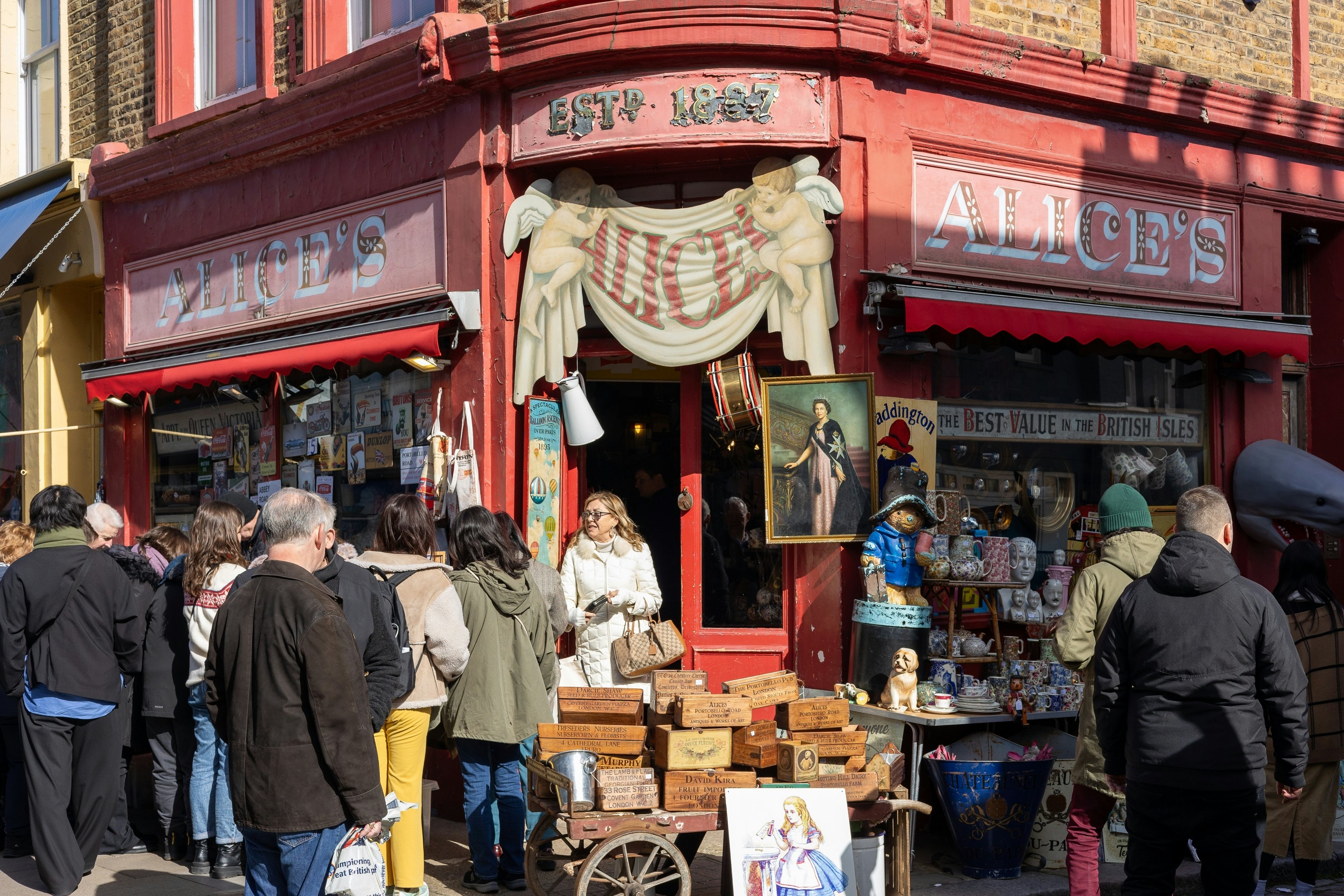
1. Browse Portobello Road Market
This sprawling but charming market is really several markets in one. The main draw for visitors to London are the hundreds of traders selling vintage clothes, antiques, bric-a-brac and street food on a half-mile stretch of street.
The prime days to visit Portobello Road Market are Friday and Saturday. Most people start on the south section of Portobello Rd – where vendors at cute historic storefronts sell maps, comics, records and artsy souvenirs – before arriving at the market stalls with antiques, handmade jewelry, paintings and clothes, among other things to purchase.
The stalls become more workaday as you move north from Elgin Crescent to Talbot Rd, with fruit and vegetables, inexpensive household goods and bric-a-brac. In and around the area below the Westway (an elevated highway), stalls dispense modern fashion, shoes and handbags.
The enclosed Portobello Green Arcade, with its clothes and jewelry outlets, is a pleasant respite from all the hullabaloo. To the north of all this is vintage-clothes heaven – although don't expect to find any bargains (you could try your luck haggling...).
A cluster of a couple of dozen street food outlets are nearby, serving everything from Thai dishes and burritos to Himalayan momo dumplings and Caribbean food.
Planning tip: Plan to spend around three hours along the market, including stopping for food. Wear comfortable footwear, as you’ll be doing a lot of walking.
2. Respectfully admire Notting Hill’s colorful houses
When much of the world thinks of Notting Hill, they think of those quintessential colorful terraced streets. There are a number of places to get that iconic shot of pastel Georgian facades, including St Lukes Mews (as featured in the Christmas movie Love Actually).
Featured in Notting Hill, Elgin Crescent is another pretty macaron-hued street with lilac, yellow and orange properties; the historic houses here date to the mid-1800s. Former prime ministers – including Boris Johnson and Jawaharlal Nehru (the first prime minister of India) – lived on this very street, as did Laurence Olivier and Margaret Fairchild (otherwise known as the “Lady in the Van”).
It wasn’t always so. This was an impoverished area until the 1980s; a small house on one of these painted streets could be bought for around £10,000 (US$13,420). Now the average price of a house on Elgin Crescent is £11 million (US$14.8 million).
Apparently, the craze for color started when one or two residents took the plunge and painted their house a bright hue. Before you knew it, others followed suit creating a domino effect.
Local tip: Travelers will be sad to hear a few residents on Lancaster Rd have had enough of the attention, amplified by social media, and have recently painted their facades black to stop people from sitting on their steps, taking photos, making a racket and generally making life for local residents unbearable. (Don’t be that visitor.)
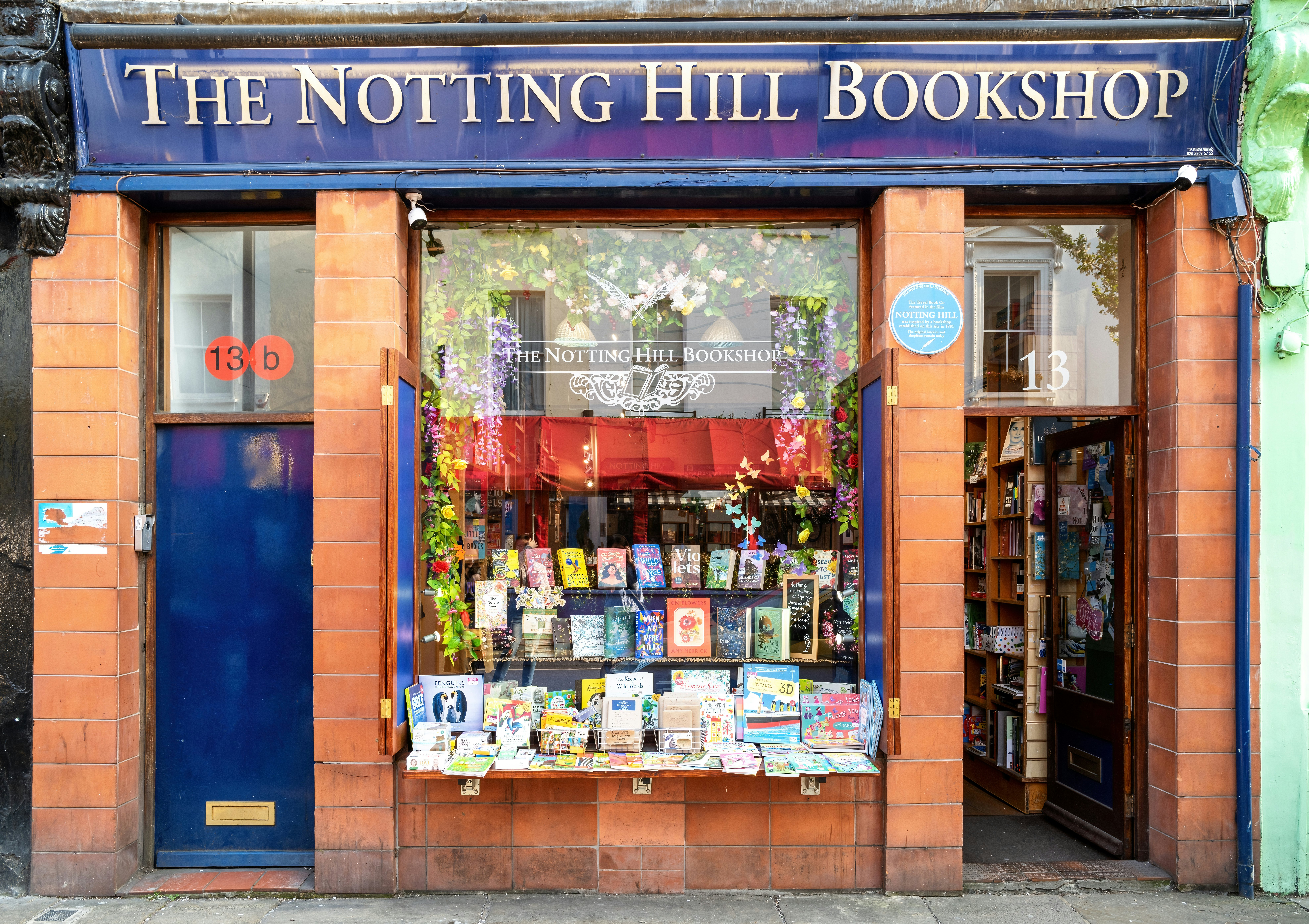
3. Browse Notting Hill’s bookshops
Notting Hill has its fair share of independent book sellers. Spread over three levels, the excellent Lutyens & Rubinstein is small but crammed with well-considered titles. It was the brainchild of two literary agents, so the focus is on quality writing as determined by readers. You won’t find piles of best sellers or remainders here.
Once a bookshop that specialized solely in travel titles, the Notting Hill Bookshop was the inspiration behind Hugh Grant’s shop in Notting Hill. It’s now a general bookshop, with a nod to travel, with lots of carefully selected titles and a cozy kid’s section under a glass roof out the back.
One specialist bookshop that soldiers on is Books for Cooks. On its shelves you’ll find an endless supply of cookery books from both established chefs and the up-and-coming, representing cuisines from around the world.
Planning tip: The cookbooks at Books for Cooks are put to the test in the cafe at the back, where you can sample recipes at lunch.

4. Stop for a pint at one of these classic pubs
West London has everything from tucked-away traditional boozers to upmarket bars perched by the canal. If you want to see more of the area via its watering holes, add these top spots to your list.
First stop: the Windsor Castle, a classic tavern with a roaring fire in winter and a beer garden in summer. The 150-year-old Pelican is also a friendly old boozer with a roaring open fire in winter, plus minimalist Scandi-inspired interiors. By contrast, packed with Winston Churchill memorabilia, the Churchill Arms is just south of Notting Hill Gate, and famous for its hanging baskets in spring and summer and extravagant Christmas decorations in winter.
For a quintessential Irish pub experience – with oysters and Guinness and a lively clientele aiding and abetting the craic – head to The Cow. In Notting Hill, the Royal Princess is a Victorian-era pub that’s been modernized in style, with a Mediterranean-inspired menu and a walled garden with olive trees for shade in summer. With wood partitions, comfy chairs, historic photos and ale on tap, the Earl of Lonsdale meets all your London pub expectations.
Detour: Slightly further afield, the Pride of Paddington is one for train geeks, with train-car-style chairs in the booths. And across the canal on the Maida Vale side, The Waterway is always popular for its waterside terrace.
5. Discover London’s unique boat community
Little Venice, supposedly named by the romantic poet Lord Byron, is at the junction between the Regent’s and Grand Union canals. Back in the day, London’s canals were the workhorses that allowed raw materials and manufactured goods to be moved between factory towns and ports, before the railroad took over.
Built in 1820 and 9 miles (14.5km) in length, the Regent’s Canal links the Paddington branch of the older Grand Union Canal with Limehouse Basin, where you can enter the Thames.
Coal, grain and other bulk commodities, such as ice imported from as far away as Norway (!), would be loaded onto horse-drawn barges and carried along the Grand Union, which runs for 137 miles (220km) – passing 166 locks along the way – to Birmingham.
Today, this delightful stretch of canal from Notting Hill to the Maida Hill Tunnel (where you can sit in Cafe Laville and watch boats pass under you) makes for an enjoyable “blue space” walk. You’ll also spot plenty of street photographers fascinated by the colorful houseboats, with their rooftop gardens, liveaboard cats, and eclectic designs.
Planning tip: The three-day Canal Cavalcade brings historic boats, food and live entertainment to Little Venice over the first bank holiday in May.

6. Take a cruise on the canal
You can join a canal cruise from Paddington Basin and Little Venice thanks to a couple of companies that offer leisurely boat trips along the Regent’s Canal to Camden Lock, passing through Regent’s Park and London Zoo along the way.
The London Waterbus Company offers between six and nine 45-minute trips a day between April and October, with fewer departures the rest of the year. You can even choose a slightly longer cream-tea trip. Jason’s Trip offers a similar journey in the same months, but with less frequent departures. Book ahead online.
Those who prefer their own adventures over a tour can rent a self-driven GoBoat from Paddington. These electric-powered boats fit up to eight people; groups can bring a picnic on board to enjoy on the table in the middle of the vessel. Head toward Maida Hill Tunnel – or to the west, away from the crowds, for a more relaxed out-and-back trip to Maida Vale and Westbourne Park.

7. Visit these off-the-radar house museums
Sometimes referred to by its address (18 Stafford Tce), Sambourne House was the home of Punch political cartoonist and amateur photographer Linley Sambourne for three decades in the late 19th century. It is one of those houses where the owners never redecorated or threw anything away. What you see is the virtually unmodernized, four-story home of a comfortable middle-class Victorian family – all dark mahogany, Oriental carpets and rich stained glass. If you’ve ever pined to enter a house unchanged since the 19th century, this is it.
Nearby Leighton House, designed in 1866 by George Aitchison, was home to the eponymous Frederic, Lord Leighton (1830–96), a painter belonging to the Aesthetic movement. The centerpiece is the Arab Hall, covered with colorful tiles from Greece, Turkey and the Middle East, with a fountain in the center and a lovely latticed window from Damascus. From Narcissus Hall, ascend the staircase guarded by a stuffed peacock to view Leighton’s two studios (one for winter only) and austere private chamber, with its narrow single bed. A new addition, completed in 2022, is linked to the historic house by an impressive helical staircase, and has added several temporary exhibition galleries.
Planning tip: You can visit both house museums with a combined ticket.
8. Shop vintage designer gems
Searching for secondhand clothing – call it preloved, or vintage – is the sine qua non of shopping in London, especially in Notting Hill and especially on and around Portobello Rd.
Use the iconic concrete Brutalist-style Trellick Tower as your waymark and head first for Rellik, a favorite of fashionistas on a budget looking for clothing and accessories from the 1970s to 2000s.
More upmarket is Found and Vision, with an abundance of irresistible 1970s lounge suits, Chanel gowns and Gaultier jackets.
And then, just about everywhere you look, are the Last Place on Earth pop-ups – four at last count – which are more secondhand than vintage.
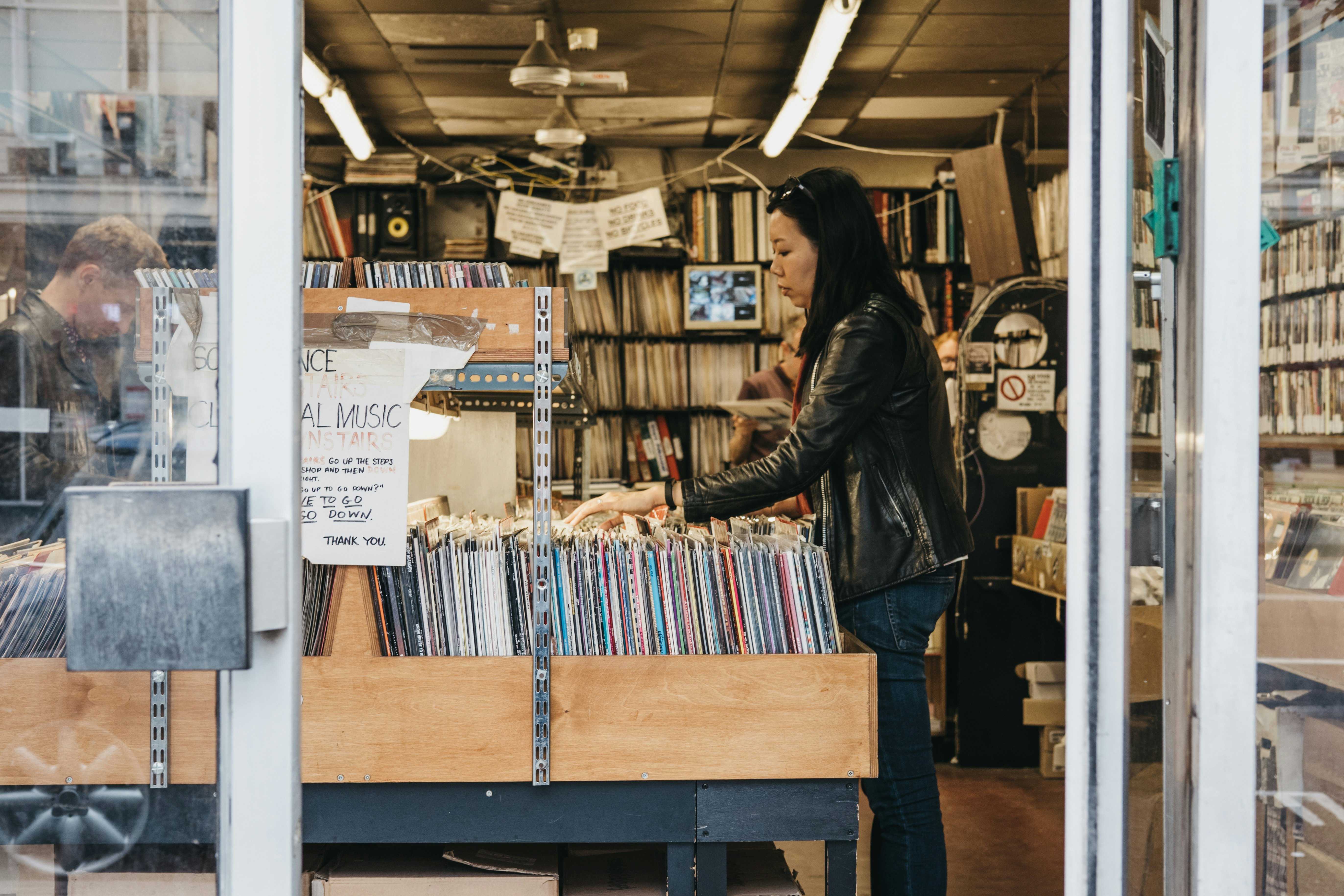
9. Go crate diving at these vinyl stores
If music is your thing and vinyl your medium, make tracks for Honest Jon’s on Portobello Rd: this Harrod’s of vintage music shops since 1974 stocks everything from blues and jazz to reggae, soul and funk. Rough Trade West has also been in place for almost half a century, and was once home to the punk label of that same name. It sells both vintage and alternative vinyl and secondhand books. It also puts on the occasional gig.
Even older than these is the Music & Video Exchange, a favorite among record collectors around the world since 1967; if you can’t find it here, it’s extinct. Look for rock and pop on the ground floor, classical and easy listening below, and reggae, soul and funk upstairs. And if it’s dancehall and reggae you’re after, head to the delightfully old-school People’s Sound Records on All Saints.
10. Follow your silver-screen dreams
Notting Hill’s credentials as a filming location are well known, and fans of the Hugh Grant–Julia Roberts movie of the same name will be stalking all its memorable locations. And since fans of the silver screen might also want to take in a film while in the area, Notting Hill has a couple of excellent cinemas.
The Gate Picturehouse has a stunningly ornate interior, and specializes in independent films; check online for what's on. One of London’s oldest picture houses, the Electric Cinema Portobello has managed to retain its vintage charm for over 100 years and screens everything from blockbusters to art-house films and documentaries. Here, you can watch films from leather armchairs or sofas with footstools, or from one of a half-dozen double beds (!) in front.
Detour: The art deco Electric Cinema White City branch, where BBC television was once based, offers similar luxury.
11. Make your own Portobello Rd gin
The Ginstitute at the Distillery is both a bar and the real deal. Located on Portobello Rd, this institution offers a comprehensive introduction to gin that will turn you into a gin expert (and a distiller) in just three hours.
You’ll start with introductory (gin) cocktail, followed by a lecture tracing the mostly sordid history of the stuff from its birth in Holland and inglorious arrival in Britain in the 18th century. After a demonstration on how it is made, you'll be given your own botanicals (herbs and scents) and set to work.
At the end of the day, you’ll have produced a 70cL (23.7 oz) bottle of your own personally devised gin blend. That’s a Notting Hill souvenir to be proud of.
12. Unleash your inner graffiti artist
Graffik Gallery is one of the earliest – if not the first – galleries dedicated to street art, with an impressive collection from both emerging artists and legends like Banksy, Bambi, Stik, Tommy Gurr and Waleska Nomura. Fans of the genre can purchase art here – or just pop in an admire what’s being exhibited. The gallery actually began with a focus on calligraphy before becoming a hub for subcultural expression.
Planning tip: If you're feeling inspired, you can also book in for a workshop or master classes. Some offerings for wannabe graffiti artists are also kid-friendly.
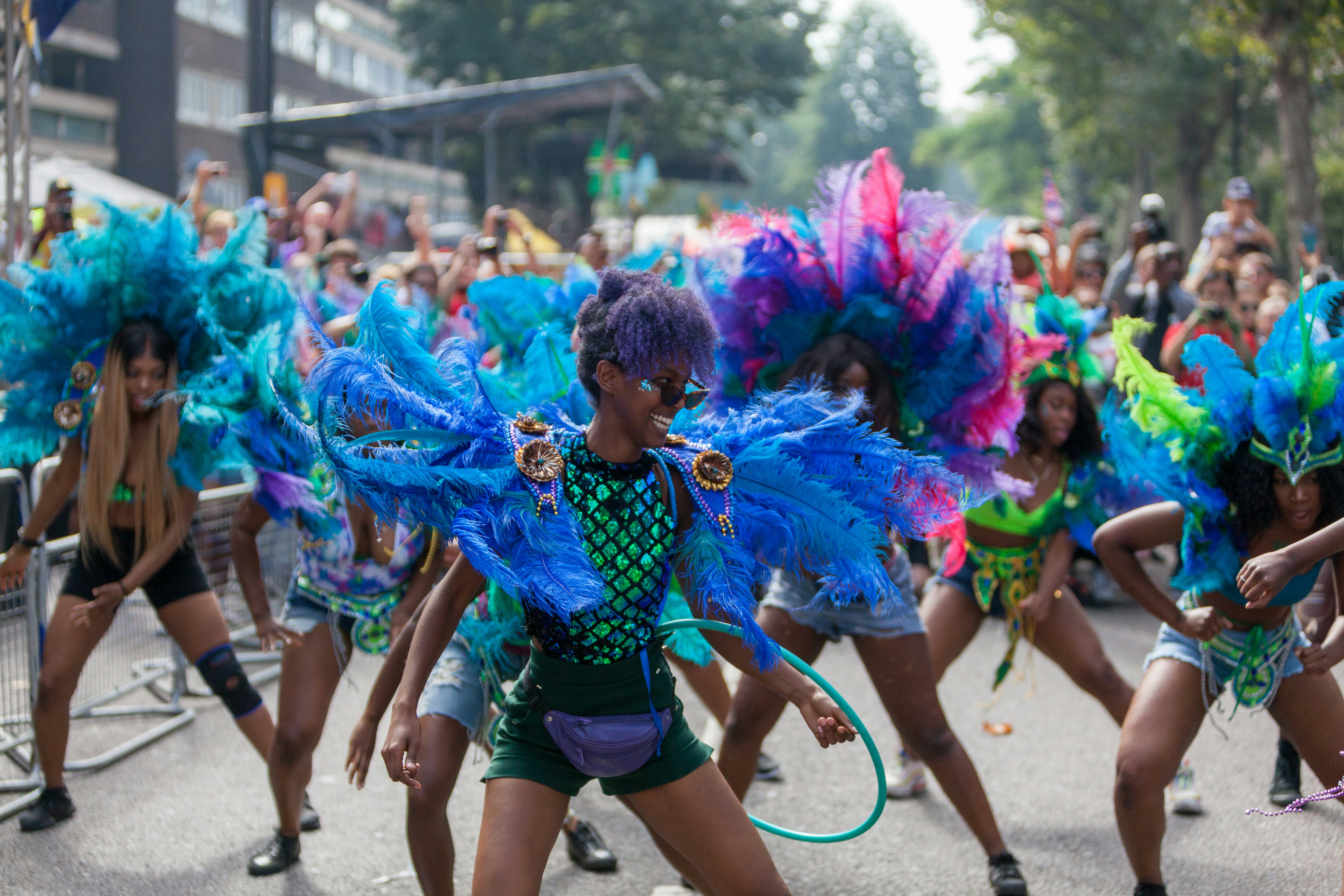
13. Immerse yourself in the revelry of Notting Hill Carnival
Millions of spectators watch elaborate floats, and tens of thousands of performers wend their way through the streets in the Notting Hill Carnival each year – transforming the neighborhood into an enormous Afro-Caribbean street party.
The Notting Hill Carnival was first held in 1966 to celebrate the culture of the then-growing community in this part of London, which was suffering from great social deprivation. That year, it attracted an estimated 500 people; in recent years, spectator numbers have breached the two million mark.
Each day of the carnival is different. “The Mas” (derived from masquerade) is the main parade, and involves costumes, makeup and headdresses that defy description...and gravity. Samba schools provide percussion and costumes that add a Brazilian flavor. “Pan” consists of steel pan bands, with calypso performers playing the sometimes light-hearted, sometimes hard-hitting music associated with Trinidad.
There are also 30-odd sound systems, both static and mobile, blaring out everything from reggae to funk, drum ’n’ bass to soca. The Mas is usually held on Monday and is the culmination of the carnival’s celebrations.
Another major Carnival draw is the street food dished out from up to 300 food stalls. Offerings include dishes from around the world; the biggest sellers are the local Caribbean ones: Jamaican jerk chicken, Trinidadian roti and Guyanese pepper pot.
Planning tip: Notting Hill Carnival is held over the last weekend in August and the following Monday (which is a bank holiday). There have been calls to relocate the event to Hyde Park, which continue to be resisted by the local community.
14. Take yourself on a self-guided walking tour
Exit Notting Hill Gate Tube station (south side). To the west is the Coronet Theatre, from 1898. Cross at the lights to the junction with Pembridge Rd; just up Kensington Park Rd is a pea-green Victorian Cabmen’s Shelter.
From Pembridge Rd, turn left into Portobello Rd – and note the blue plaque at No 22, commemorating erstwhile resident George Orwell. Opposite, at No 19, is street art credited to Banksy that spells out ”Made You Look!” in Scrabble squares.
Across from Denbigh Tce, with its pastel-colored houses, is street art on a larger scale at No 95 to 97: a giant face mural etched into the stucco by Portuguese artist Vhils.
At No 142 Portobello, you can pop into “The Travel Book Shop” – which was used for the exterior shots of William Thacker’s (ie Hugh Grant’s) bookshop in Notting Hill. To see the real shop, walk past the Electric Cinema and turn into Blenheim Cres to the Notting Hill Bookshop.
Cross Portobello Rd and follow Talbot Rd past All Saints Church to Powys Sq, and the landmark The Tabernacle arts center. Finally, walk north to Westbourne Park Rd and turn left. Here, the blue door at No 280 was the entrance to Thacker’s flat in Notting Hill, when Hugh Grant opens the door to the paparazzi in his trunks, followed by his housemate (played by Rhys Ifans) in his briefs.
This article was adapted from Lonely Planet’s London guidebook, published in June 2025.









